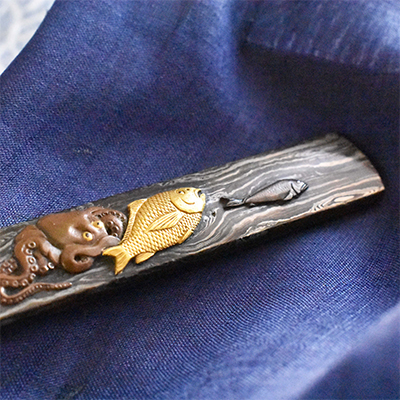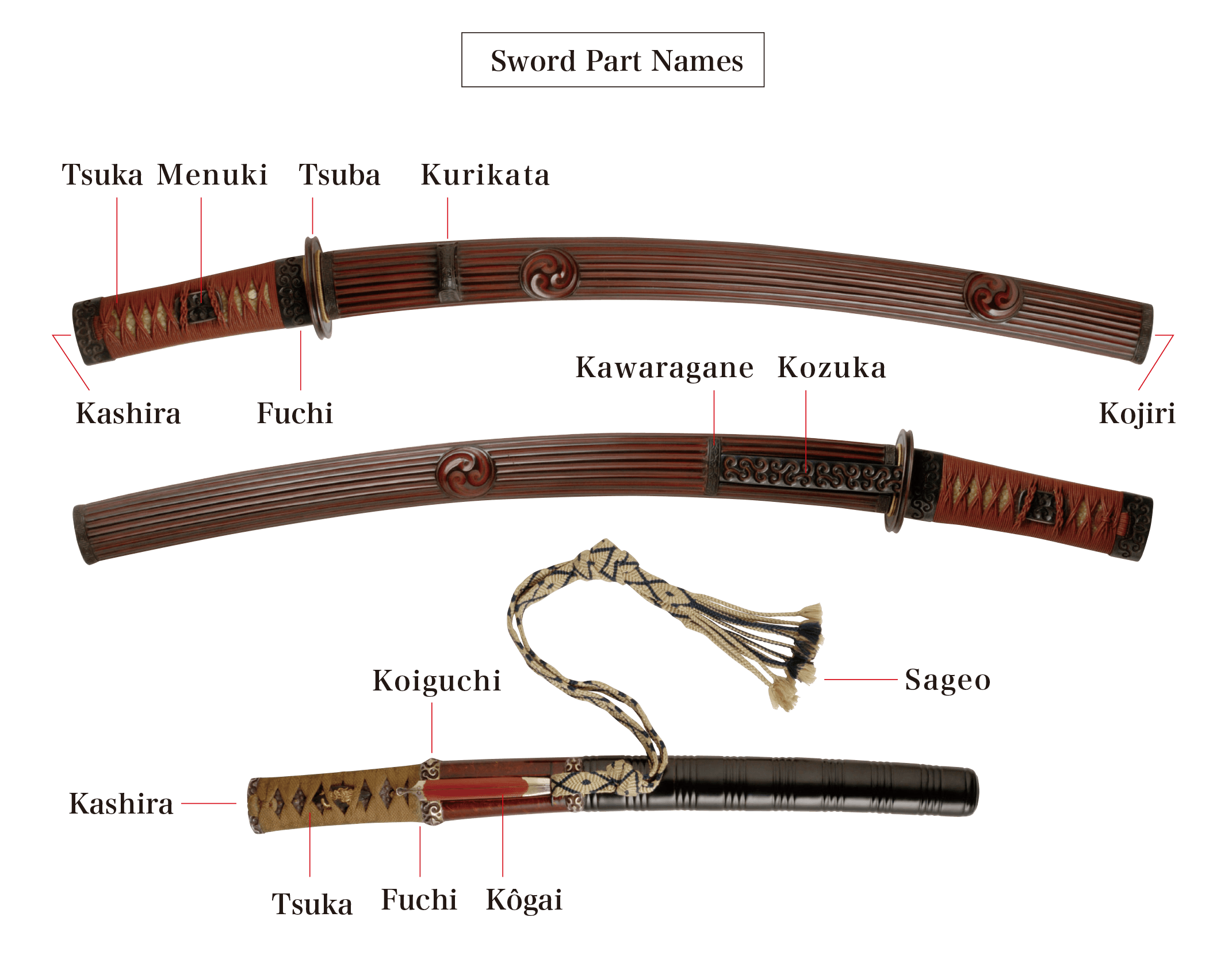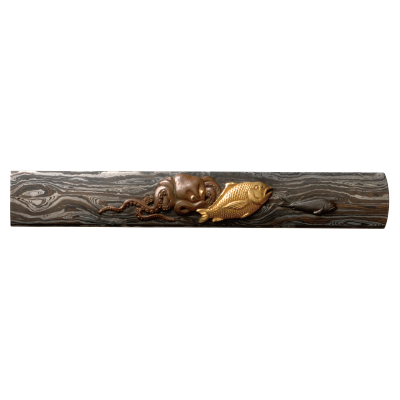Kozuka with design of woodgrain pattern. Unsigned.
Mid-to-late Edo period
Shakudo, Copper, Gold
【 Dimensions(mm)】- L 98.0 x W 14.6 x T 4.0 / 29.3g
- 【 Date of production 】
- Mid-to-late Edo period
- The top piece is a kozuka with a flower and bird
design. It is extremely delicate and an exceptional
example of the craft of metalsmithing.
The middle piece shows sea creatures
against a background of mokume gane. The
mokume gane stands out in the flow of water
in this heart-warming, fantasy-like design.
The bottom piece is a kozuka from the
late Edo period that is thought to be from the
Takahashi School. The two crests done in gold
inlay cannot be taken as a specific family crest
design, but as ornamental design elements.
Overseas corporate brand monograms also
have their roots in this type of crest design.
The fan-shaped crest belongs to the Satake
Clan for whom Shoami Denbei worked as a
craftsman.
- <
- 12
- >


